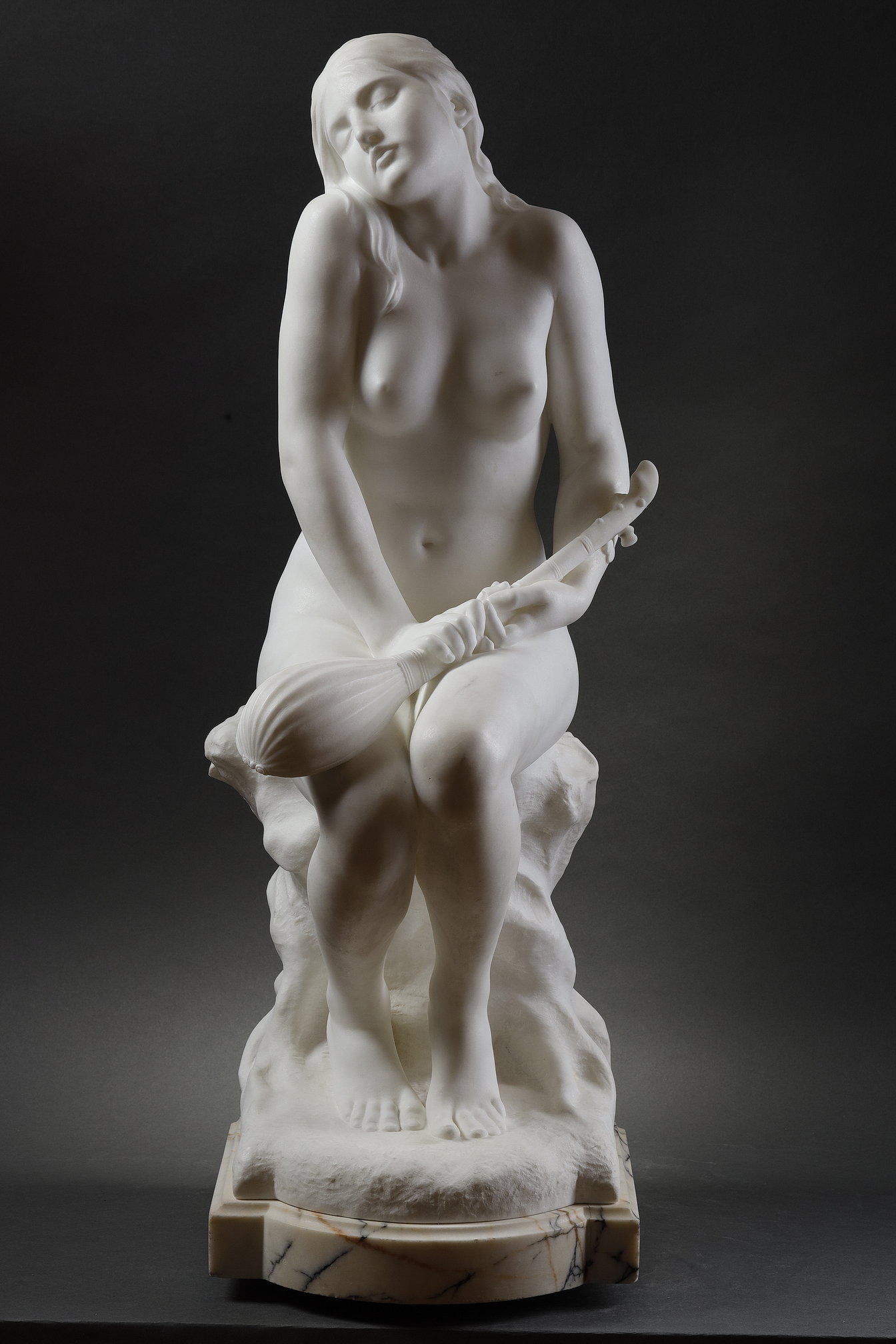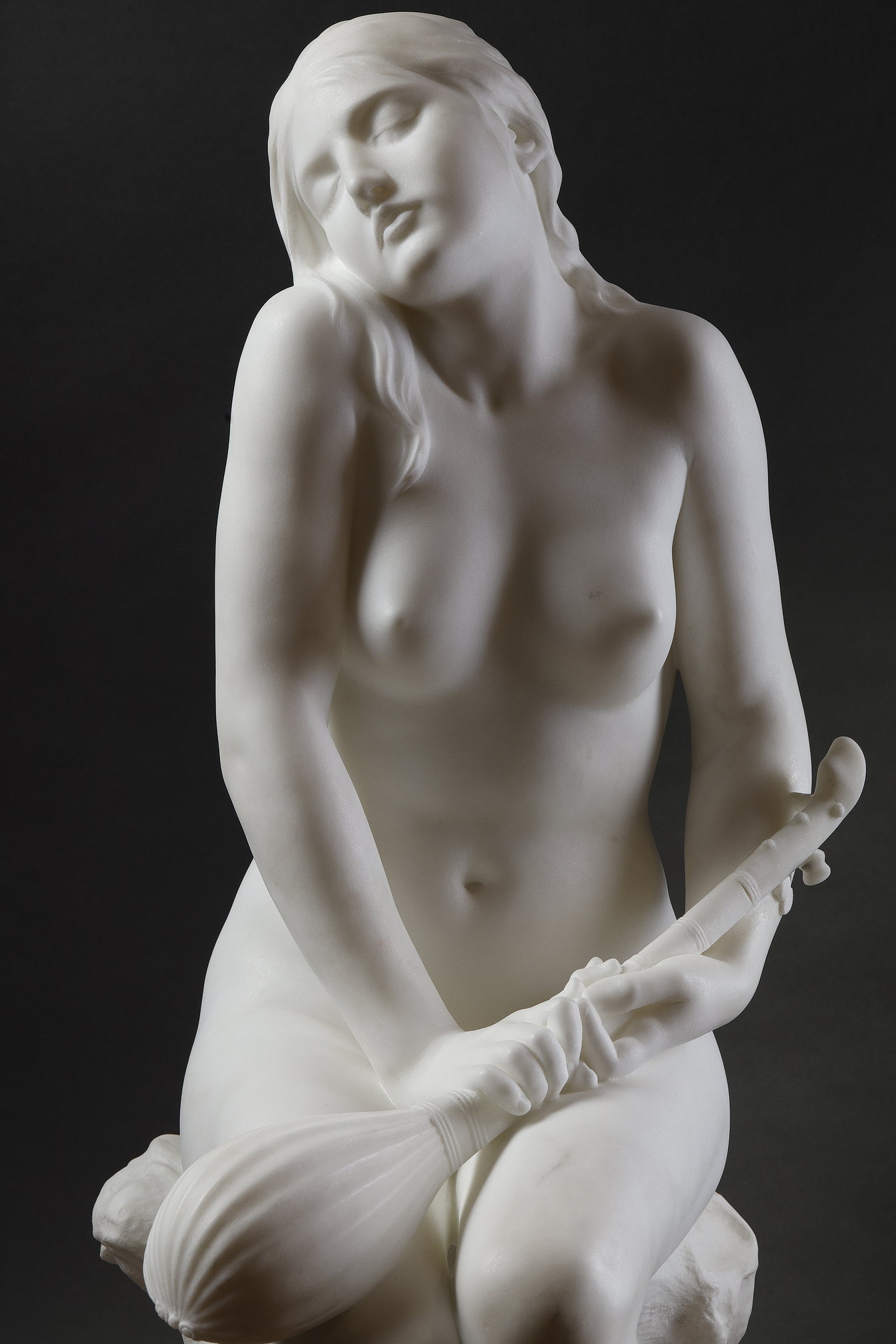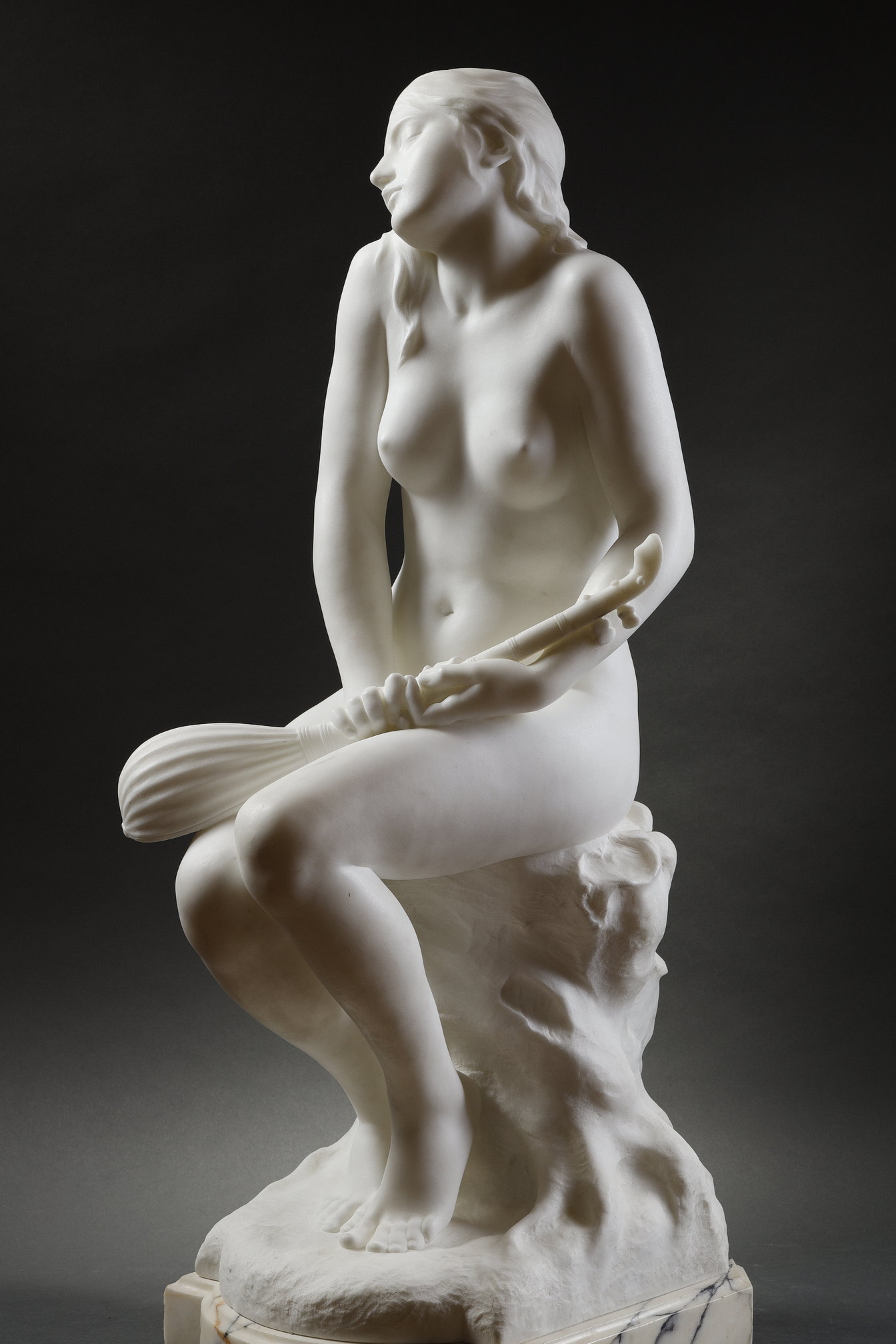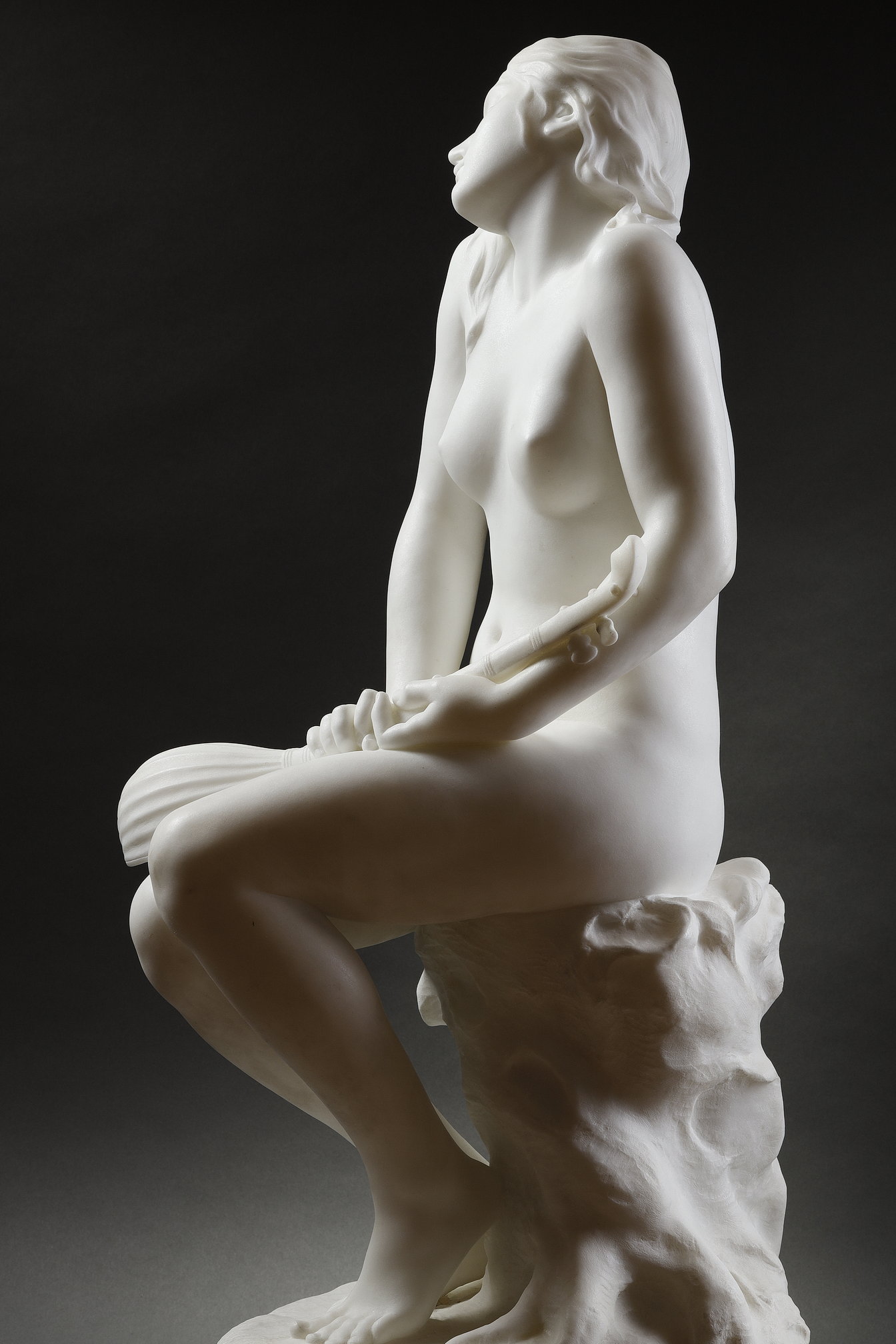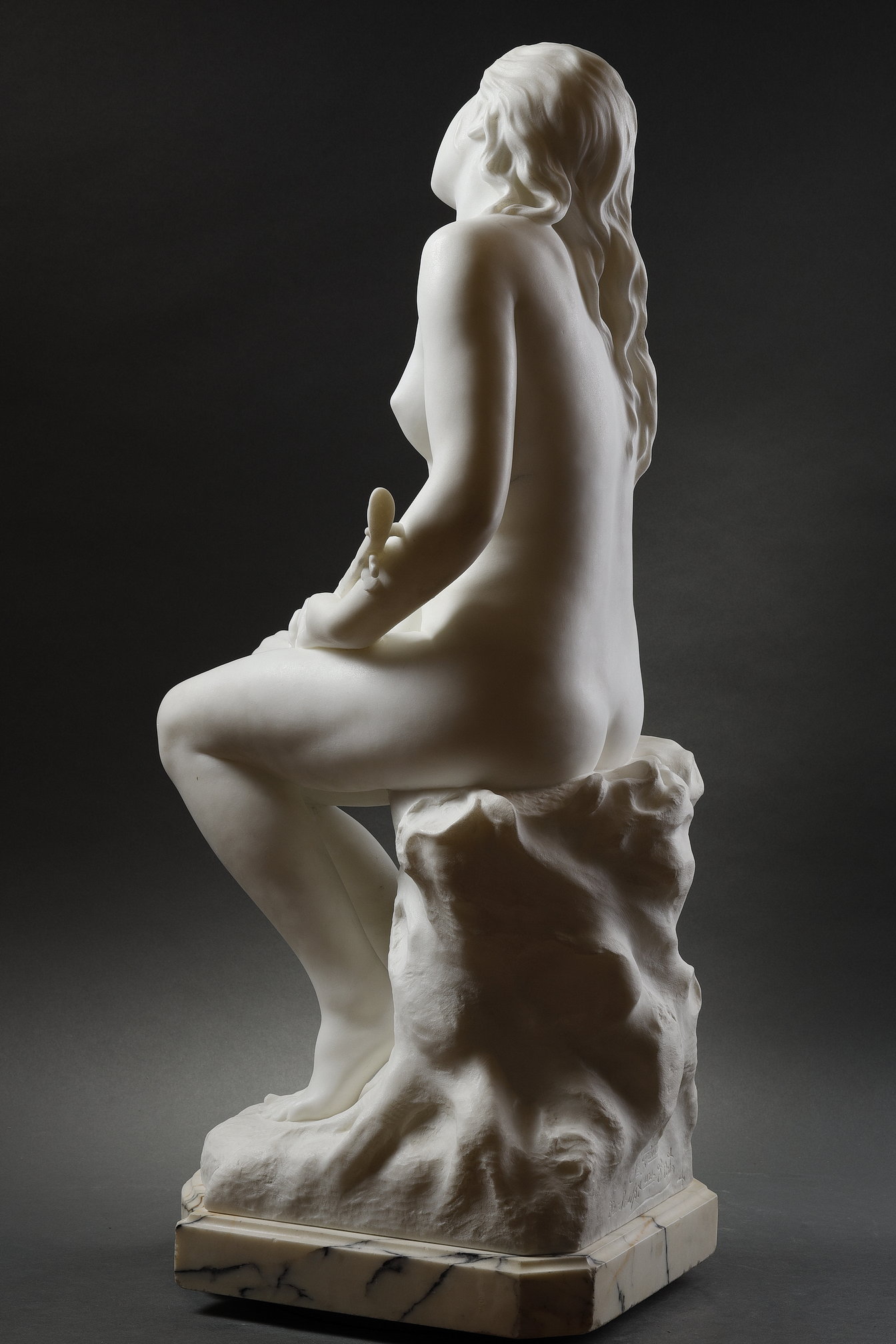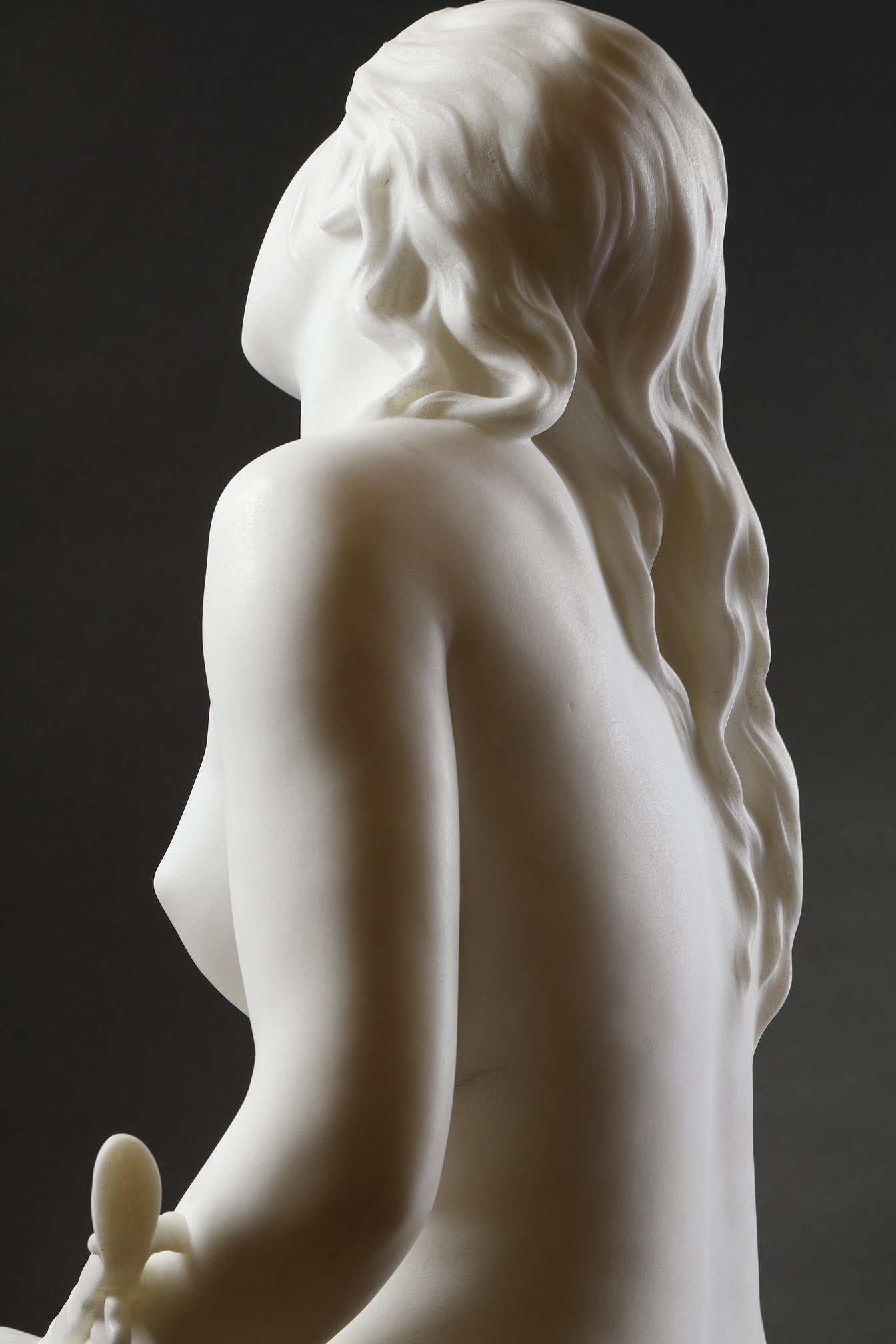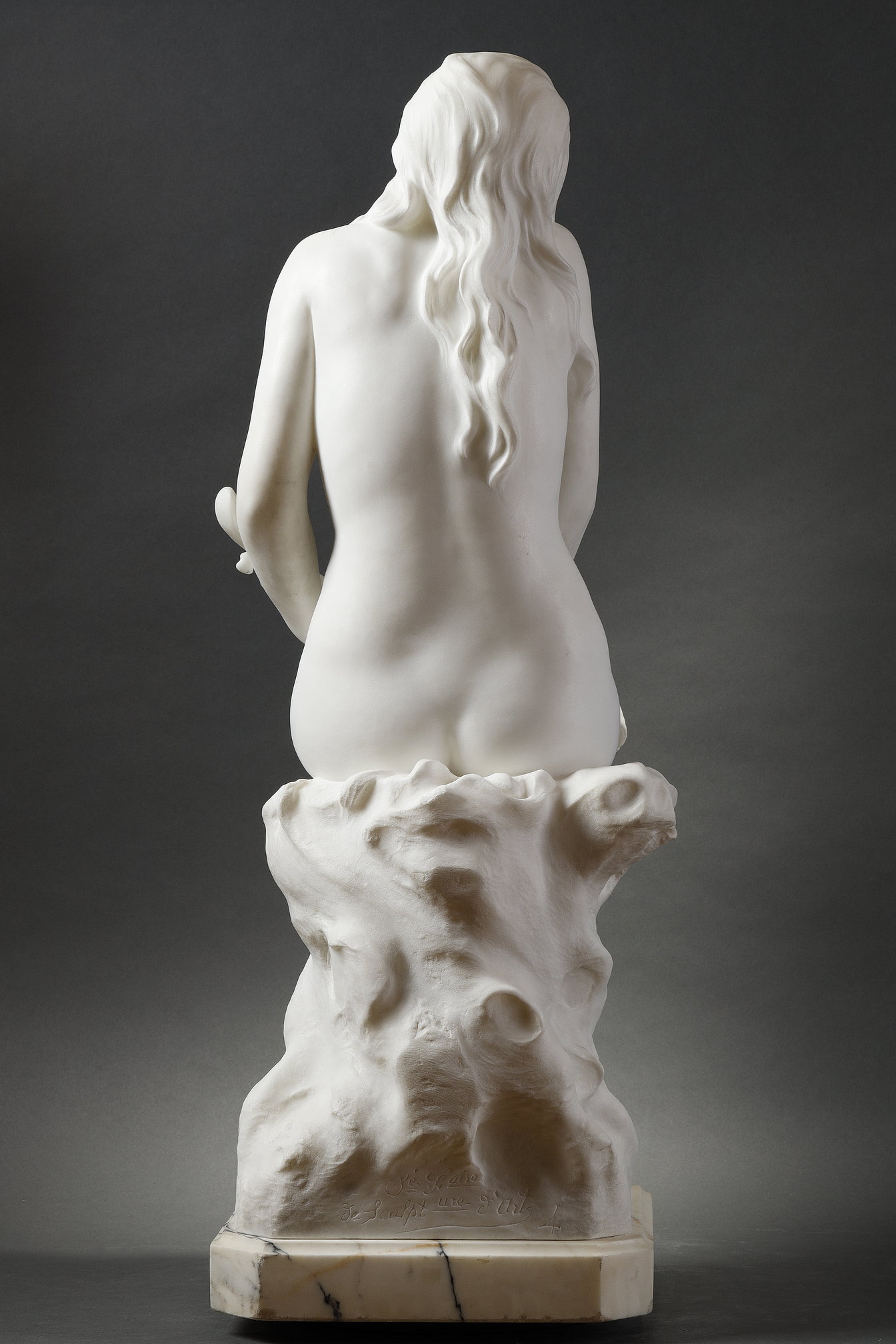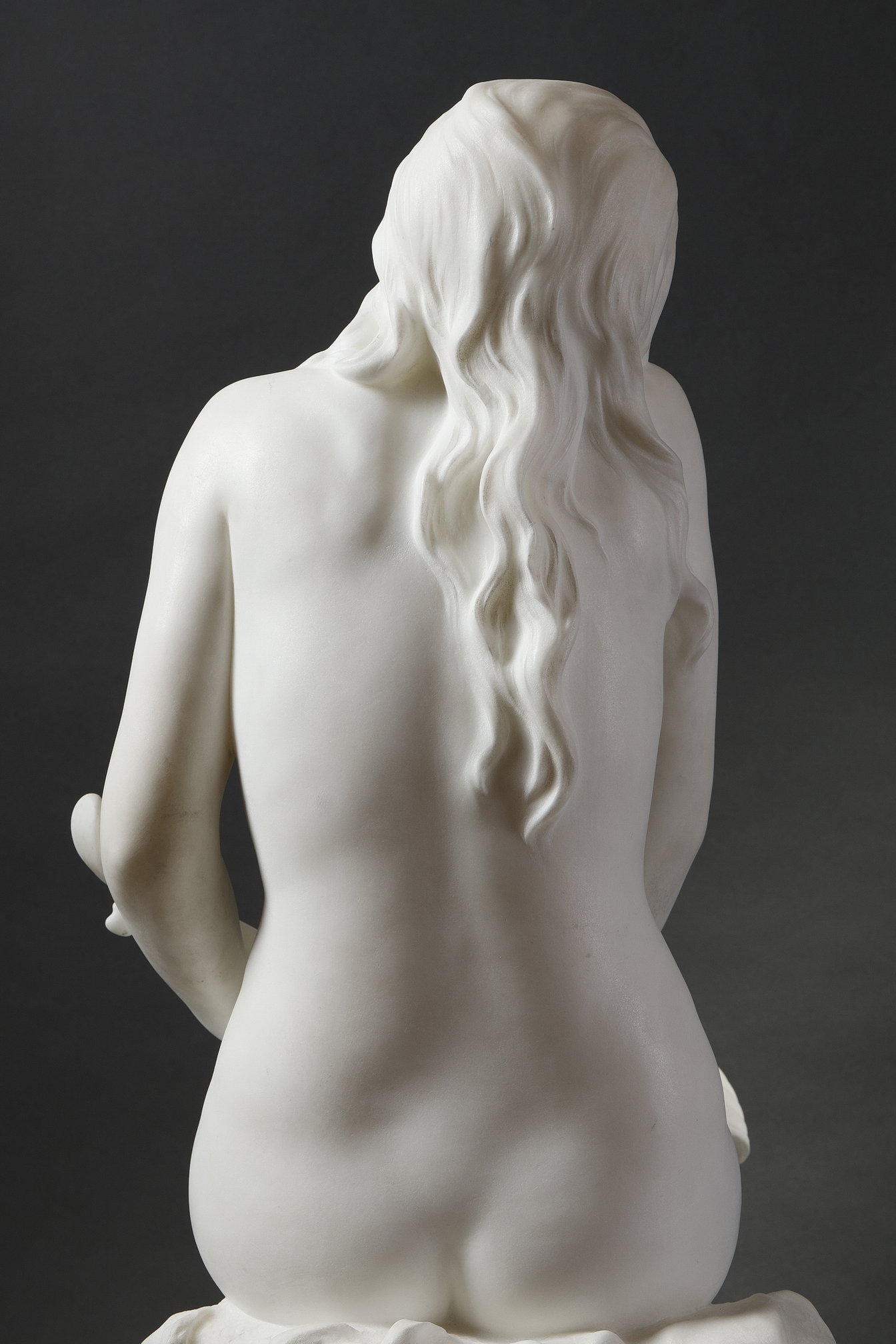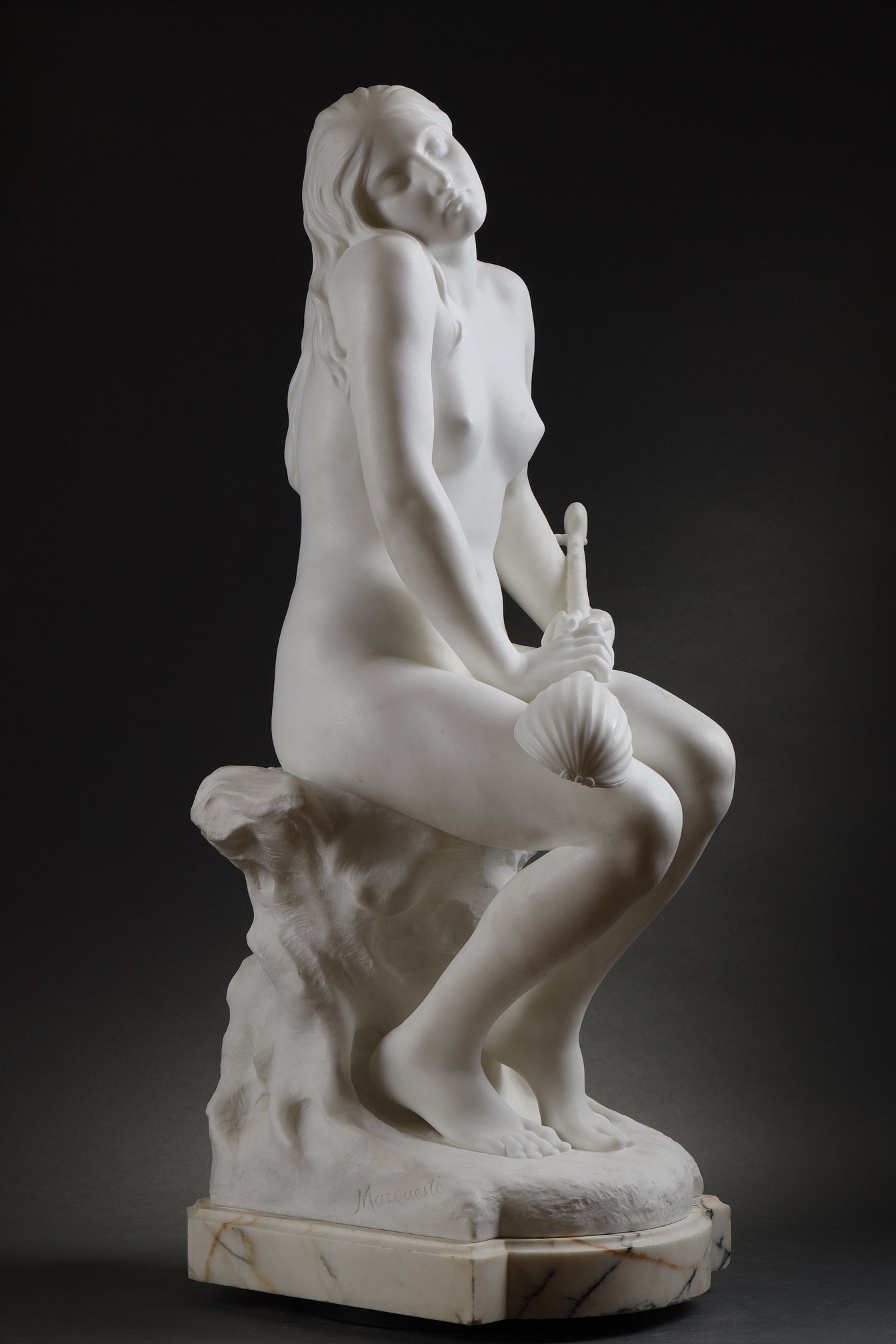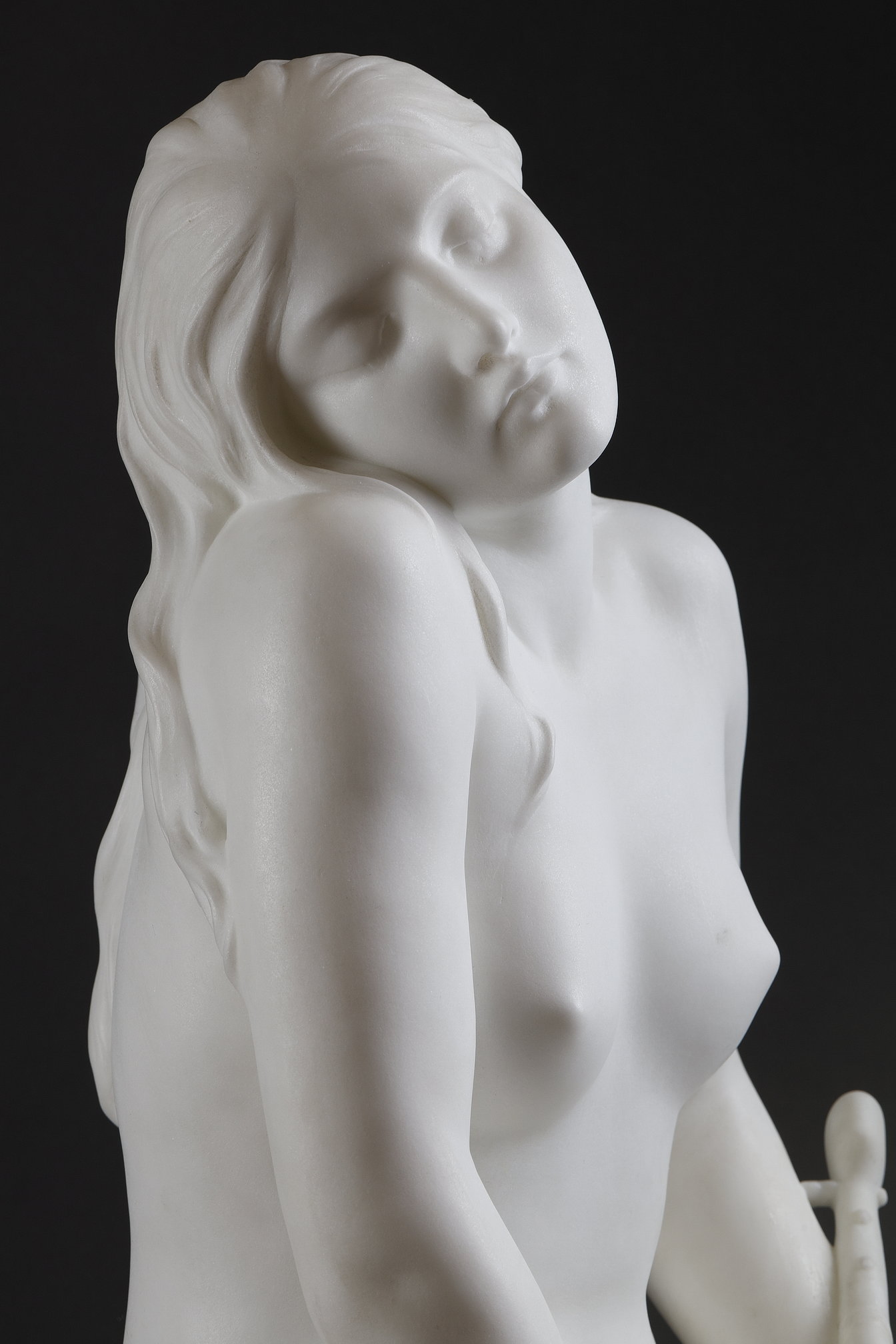THE CICADA
LAURENT-HONORÉ MARQUESTE (1848-1920)
French
Date : ca. 1894
Dimensions : 87 x 35 x 30 cm
Material : White Carrara marble (Sculpture) / Calacatta Oro marble (Base)
Signature : “Marqueste”
Inscription : “Sé Faise de Sculpture D’Art 4” (Trad. “French Society of Art Sculpture 4”)
Provenance : Francis Meyer Collection, Switzerland
Historical and artistic context
Sensual, meditative, and rich in symbolism, The Cicada depicts a young nude woman seated on a tree stump, a mandolin resting on her lap. Her posture suggests serene abandon: head tilted back, eyes closed, arms relaxed—in an attitude of reverie or musical introspection. The contrast between the model’s smooth skin and the rugged texture of the base lends the sculpture a poetic duality: softness versus roughness, harmony versus raw matter.
The choice of the mandolin—an instrument known for its tremolo playing (a rapid repetition of a note that evokes a subtle sonic quiver)—reinforces the connection with the song of the cicada. The work thus fits into an allegorical tradition where the cicada represents the artist, the musician, or the carefree poet singing through the summer, untroubled by the coming of winter.
The present piece comes from the Francis Meyer collection (Switzerland) and is an intimate model carved in white Carrara marble, standing 87 cm high, resting on a base of Calacatta Oro marble.
The Cicada was exhibited in 1894 at the Union Artistique of Toulouse (no. 573), described as a “marble statuette.” It was subsequently shown at the 1900 Paris Exposition Universelle, where Marqueste was awarded the gold medal and grand prize for his exhibited body of work, of which this piece was a part. A full-scale version of the sculpture, measuring 195 cm in height, was acquired by the French State at the 1894 Paris Salon. Other versions are known: a 132 cm marble model was gifted by Marqueste (or by his widow) to the Académie des Beaux-Arts for the Museum of Caen between 1920 and 1924.
Literature
- Union Artistique de Toulouse, 10e année : Exposition de 1894, ouverture le 15 mars au Capitole, Toulouse, 1894, n°573
- Salon de 1894, Paris : Ludovic Baschet Editeur, 1894, pp. 83 et 94
- Exposition Universelle de 1900, Catalogue officiel illustré de l’Exposition décennale des Beaux-Arts de 1889 à 1900, Paris, 1900, p.175
- A. Vivet, Congrès de musique sacrée, Insitut de France, 1938 – Documentation photographique montrant La Cigale au Musée de Caen en 1937.

